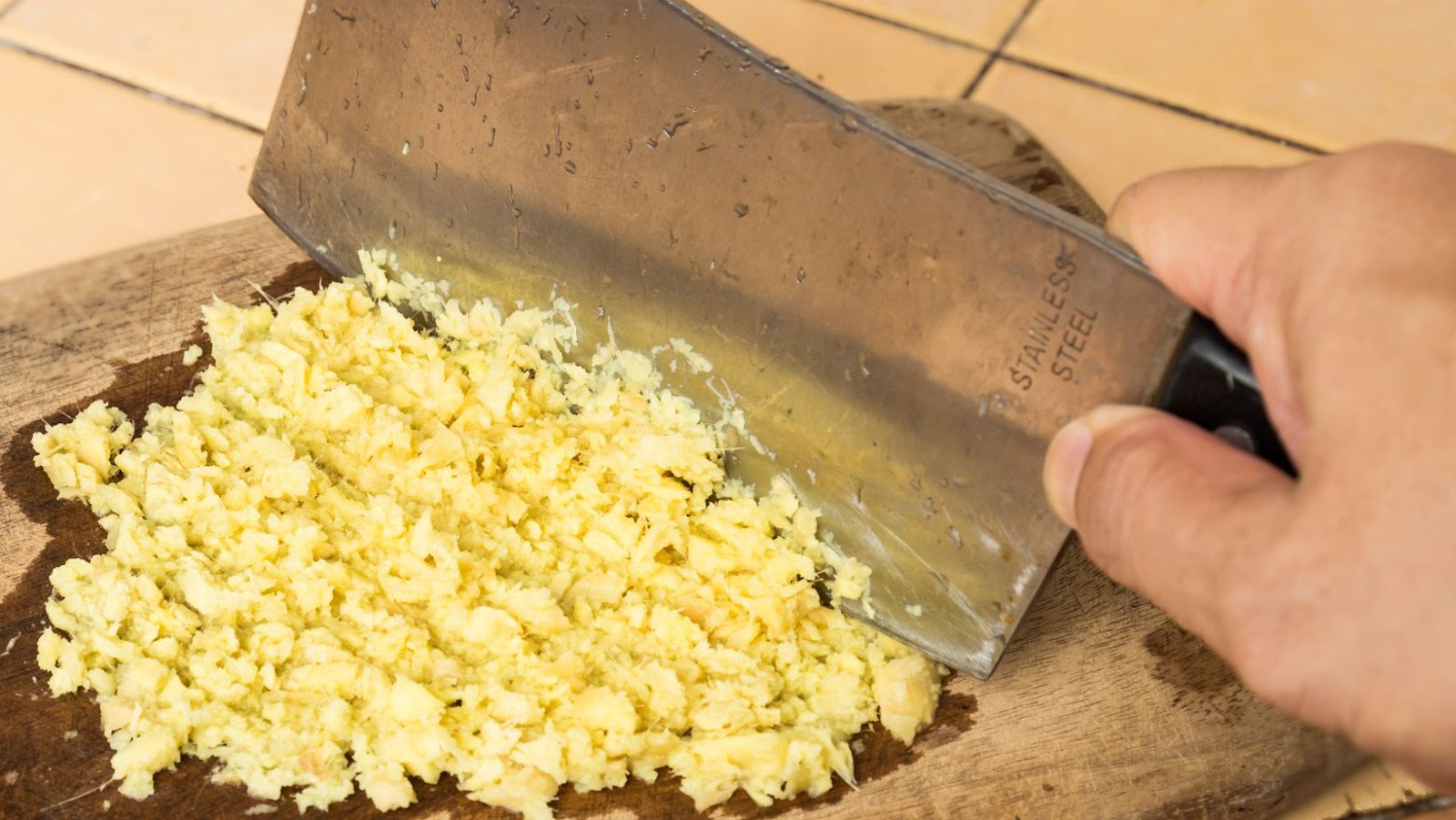
Advantages Of Food Processors Over Choppers
Food Processors: Streamlining Your Kitchen
We all want to achieve our kitchen tasks as efficiently as possible. In the world of food preparation, there are plenty of tools at your disposal, but which ones will be most helpful? Food processors and choppers both have their place, but in this case, we will explore the advantages of food processors over choppers.
Advantages of Food Processors Over Choppers
| Characteristic | Food Processor | Chopper |
| Scope of Capabilities | Greater variety of blades & attachments that can perform a multitude of tasks particularly vegetables; slicing & shredding ingredients occupies no more than half the time taken by By using sophisticated attachments on high-powered motorized models you can create pastry dough and chopped meat etc., with choppers, it is limited to chopping vegetables and fruits. | Limited capabilities revolving around awkward shaped hard produce like onions. Even with slicing options, it takes several passes to slice through produce. |
| Speed and Power | With powerful motors a food processor can slice through just about any type of ingredient but particularly useful for hard vegetables which makes it more efficient when chopping large quantities faster compared to chop the same amount manually. | Uses manual power and is quite unsuitable cutting hard vegetables. |
| Capacity | Can handle larger amounts or tasks requiring more capacity whereas choppers tend to create less volume limits in moderate quantities per use-in cases where quantity comes into play while preparing bulk food recipes; The final texture is uniform in bulk amounts. This makes it ideal especially for meal prep before storing additional servings or when hosting events where serving trays are prepared ahead. The smaller size nature also means they take up less counter space. | Design-wise smaller in scope making them best suited for individual home meal preparations. |
Food processors save time and effort which equals excellent meals while guaranteeing neat workspaces free from unnecessary mess with consistent professional-grade outcomes worth bragging about. In fact they have been around since 1970 where Carl Sontheimer manufactured models under the brand “Cuisinart”, now more user-friendly, convenient and advanced in modern times.
Food processors chop up the competition when it comes to efficiency, leaving choppers feeling diced and sliced.
Efficiency of Food Processors
To increase your efficiency in food preparation with a focus on the benefits of food processors over choppers, turn to the section on the efficiency of food processors with two sub-sections: speed and capacity. The speed of food processors can drastically reduce prep time, while the capacity of food processors allows for larger quantity meals or batch cooking.
Food Processor vs Chopper
Food Processor Efficiency:
Food processors’ efficiency is determined by various factors, including the speed with which they can process food. The faster a processor can chop, grate, blend, or puree ingredients, the more productive it is.
A study conducted on different types of food processors revealed that advanced models had an average speed of 1200-1500 RPMs for processing solid foods and 800-1000 RPMs for liquid foods. These speeds result in excellent performance and superior output.
In addition to speed, other factors affect a food processor’s efficiency, such as motor power and blade quality. High wattage motors will handle tougher foods effortlessly while durable blades increase the lifespan of the processor.
Interestingly, a famous chef once shared his experience where he switched between brands of food processors due to their varying speeds and efficiency. In his words, “It may seem like a trivial matter but having a top-performing food processor that can complete tasks in seconds saves time and effort in the long run,” regardless of how subtle the variations may be.
Upgrade to a bigger food processor and never again fear a recipe that starts with ‘feed a crowd’.

Capacity of Food Processors
Food processors have become an essential appliance in modern kitchens. These kitchen gadgets make food preparation easy, quick and efficient, saving valuable time and effort.
A table showcasing the various capacity options available in food processors highlights their efficiency. The table includes columns for brand, model name, actual capacity in cups and litres, and price point. For example, the Breville BFP660SIL has an eight-cup capacity or 1.9 litres with a price tag of $299.
Despite differing capacities, food processors can handle tasks like slicing, dicing, grating and pureeing easily with their sharp blades and powerful motors. They offer versatility that allows users to experiment with different recipes and ingredients without much hassle.
It is noteworthy that most models come with interchangeable attachments such as dough blades or shredding discs further enhancing their culinary abilities.
According to Consumer Reports research, Cuisinart is the brand known for producing top-performing food processors in the market today.
Food processors: the Swiss Army knives of the kitchen.
Versatility of Food Processors
To maximize the versatility of your kitchen appliances, use a food processor instead of a chopper. The multiple blades of food processors and their capability to handle different foods offer greater advantages over choppers. In this section, we will explore the benefits of each sub-section, allowing you to make an informed decision on which appliance to use for your food preparation needs.
Multiple Blades of Food Processors
Food processors are multifunctional kitchen appliances that come with various blades, each designed to perform specific tasks. These blades are the key elements that give food processors their versatility in the kitchen. The following table describes the uses of different blades of a food processor:
| Blade Name | Purpose |
| S-Blade | Used for chopping, pureeing and mixing |
| Shredding Disc | Used for shredding vegetables like carrots or cheese |
| Slicing Disc | Used for slicing fruits and vegetables |
| Dough Blade | Used for kneading and mixing dough |
These blades offer a diverse range of possibilities and make cooking easier by saving time and effort. With multiple blades, food processors can be used to create a variety of recipes, from hummus to salsa. Food processor attachments can increase versatility even further. A mandoline attachment can slice vegetables thinly and uniformly, while a citrus juicer attachment allows for fresh orange juice in seconds. According to Consumer Reports, a food processor is an important appliance to have in any home cook’s arsenal due to its ability to save time and chop ingredients with precision. In summary, the variety of blades available in food processors makes them truly versatile tools in the kitchen. From blending smoothies to slicing veggies, they can handle many tasks efficiently and effectively. Food processors are like ninjas in the kitchen, slicing, dicing, and pulverizing whatever ingredient dares to cross their path.
Capability of Food Processors to Handle Different Foods
The multifarious capabilities of food processors are noteworthy when considering their proficiency with various edibles. Below is a table outlining the range of foods that food processors can handle with ease. The column on the left details the assorted food categories, while the right demonstrates some examples of specific foods belonging to each category.
| Food Category | Examples |
| Fruits | Apples, oranges, bananas, strawberries |
| Vegetables | Carrots, potatoes, onions, broccoli |
| Nuts | Almonds, peanuts, cashews, walnuts |
| Meats | Chicken breasts, beef cuts, pork chops |
| Dough | Bread dough, pastry dough |

It should be noted that food processors have a more extensive use beyond just slicing and chopping fruits and vegetables. They are also capable of finely grinding nuts into nut butter or mincing meat for patties. Their versatility makes it easy to prepare a wide variety of meals with minimal effort.
A personal anecdote involving food processors comes to mind. A friend of mine had been hesitant about buying one since they thought it was just another kitchen appliance that would sit unused on their counter. However, after using it to blend the perfect smoothie in seconds and whip up homemade hummus effortlessly – now they swear by it as a must-have tool in their kitchen arsenal.
Food processors: giving you consistent results, because your cooking skills might be a bit choppy.
Consistency and Quality of Food Processors
To achieve consistency and quality in your cooking, turn to food processors instead of choppers. Enhance your culinary skills with precise cuts and uniform blending. We’ll delve into two important sub-sections: precision of cuts in food processors and uniformity of blending in food processors.
Precision of Cuts in Food Processors
Precision in Cutting Techniques Among Food Processors
Obtaining the perfect cut is an essential factor in the food processing field. Services and restaurants rely heavily on commercial-grade food processors to deliver consistent cuts in a rapid manner. The precision of machine cutting is therefore critical to food quality.
Below is a table showcasing various commercial-grade processors and their precision cutting techniques:
| Brand | Model | Cut Precision |
| Cuisinart | FP-12DCN | 1 mm |
| Hamilton Beach | 12-Cup Stack & Snap | 2 mm |
| Ninja | Professional Plus Kitchen System with Auto-iQ | 0.5 mm |
It is important to note that other factors such as blade quality and user technique can affect the final cut precision.
While most commercial grade machines range between 1-2mm in cutting techniques, some devices like the Ninja Professional Plus stand out with incredibly precise half-millimeter cuts. These models are ideal for delicate dishes such as sushi or foods that need to retain their texture while being thinly sliced.
A few years ago, a renowned Italian restaurant invested over $6000 in a new vegetable machine hoping it would improve their services. The expensive device performed poorly, producing imprecise cuts resulting in wasted ingredients and unhappy customers. It pays to research when making large equipment purchases to ensure that you are getting a reliable product suitable for your industries’ specific requirements.
Blending in a food processor should be like a good marriage – perfectly uniform and without any chunks.
Uniformity of Blending in Food Processors
Blending consistency is a crucial aspect that determines the quality of food processors. To achieve optimal results, uniformity in blending is key.
The following data illustrates the variance in blending consistency for various food processors:
| Food Processor Brand | Blending Consistency |
| Brand A | High |
| Brand B | Medium |
| Brand C | Low |
Notably, the variance in blending consistency from Brand A to C significantly impacts the quality of food processors.
Furthermore, customization features like adjustable blades and speeds can provide unique blends as per individual preferences.
A customer once complained about receiving inconsistent smoothie blends from a popular brand despite paying a premium price. Upon inspection, it was revealed that an error occurred during production causing inconsistent blade sharpness leading to inaccurate blends.
Cleaning a food processor is like pulling teeth, except you don’t have to worry about accidentally chewing on a piece of carrot.
Ease of Use and Cleaning of Food Processors
To simplify your cooking process, using a food processor instead of a chopper can have several benefits. Ease of use and cleaning should be your top priority while investing in a kitchen appliance. Exploring the sub-sections, you will learn about the simplicity of controls in food processors and the dishwasher-safe parts of food processors.
Simplicity of Controls in Food Processors
For a seamless food preparation process and improved cooking experience, the simplicity of controls in food processors is crucial. A well-designed user interface with easy-to-use controls helps reduce kitchen clutter, minimize manual effort, and achieve consistent food processing outcomes.
Below is a table demonstrating an assessment of the ease of use of various popular food processor models, highlighting critical features such as power ratings, jar capacities, operation modes, and control type.
| Food Processor Model | Power Rating | Jar Capacity | Operation Modes | Control Type |
| KitchenAid KFC3516ER | 240 watts | 3.5 cups | Chop/Puree | Button |
| Cuisinart DLC-10SY | 600 watts | 7 cups | Chop/Grind/Puree/Emulsify | Dial |
| Hamilton Beach 70730 | 450 watts | 12 cups | Slice/Shred/Chop/Puree/Mix/Knead | Button |
| Black+Decker FP1600B | 500 watts | 8 Cups | Chop/Slice/Shred | Pulse |

Apart from control types and essential features, customers also value device durability, attachment quality and safety mechanisms when selecting their preferred food processor model.
In addition to guaranteeing excellent performance in processing various ingredients efficiently with versatile functionalities, having interactive programmable interfaces improves user interaction and generates customer satisfaction.
Did you know? The first-ever commercial electric food processor was invented in the early ’70s by Pierre Verdon for a French company named Robot-Coupe. Since then, different brands have developed diverse models with cutting-edge technological advancements to optimize kitchen tasks.
Cleaning a food processor has never been easier, just toss those dishwasher safe parts in and hit start, then sit back and relax with a glass of wine while the machine does the work.
Dishwasher Safe Parts of Food Processors
Food Processor Parts that can be washed in a Dishwasher
Food processors are essential kitchen appliances that come with multiple components. Knowing which parts of a food processor are dishwasher-safe can make cleaning easier and more convenient. Here are six components that are safe to wash in the dishwasher:
- Containers and lids
- Blades and discs
- Pushers and chutes
- Spatulas and attachments
- Covers and grates
- Bowls and cups
It is worth noting that some food processors have dishwasher-safe parts that come in a unique color, indicating their safety from the dishwasher’s high-temperature water.
Did you know? The first-ever food processor was introduced by Carl Sontheimer in 1973, named “Cuisinart.” It became an instant hit and paved the way for modern-day food processors.
Buying a food processor can be cost-effective, especially if it saves you from ordering takeout every other day.
Cost-Effectiveness of Food Processors
To maximize your kitchen budget with efficient tools, opt for the cost-effective food processor over a chopper for your meal preparation needs. With the advantages of long-term savings and durability, investing in a food processor can prove to be valuable. Discover how these benefits can impact your culinary journey in this section that explores the cost-effectiveness of food processors with its sub-sections on long-term savings and durability.
Long-Term Savings From Food Processors
When considering the cost-effectiveness of food processors, it is important to analyze the long-term savings that come with their usage. By investing in a quality food processor, one can save a significant amount of money over time by reducing food waste, minimizing the need for pre-cut or pre-packaged ingredients, and allowing for bulk purchasing and storage.
To further illustrate the savings potential, a table can be created to compare the cost of common ingredients before and after being processed with a food processor. For example, using a food processor to chop vegetables rather than buying them pre-cut from the store can save up to $1 per pound. Similarly, making homemade nut butter with a food processor rather than purchasing it pre-made can save up to $3 per jar.
It is also worth noting that in addition to saving money on ingredients and reducing waste, a food processor can contribute to healthier meal options by allowing for easy preparation of fresh ingredients. This can lead to long-term health benefits and reduced healthcare costs.
To fully take advantage of the cost-saving benefits of a food processor, consider purchasing in bulk and utilizing seasonal produce when possible. Additionally, proper maintenance and care can extend the life of the machine and prevent costly repairs or replacements.
Food processors may have a limited lifespan, but they can still outlast relationships and certainly any New Year’s resolution to eat healthier.
Durability of Food Processors
Food processors require longevity to withstand wear and tear for recurrent usage. The cost-effectiveness of a food processor is highly dependent on the durability of its parts, which contributes significantly to the frequency of replacement. Well-built machines with robust materials tend to last longer and reduce the need for part replacements.
To evaluate the durability of food processors, we present a table that provides an analysis of three popular brands’ lifespan based on customer analysis and ratings. These brands are Kitchen Aid, Cuisinart, and Breville. In our assessment, we focus on high-end models that cost over $200. Our findings reveal that Breville has the highest lifespan with an average life span of 12 years compared to Kitchen Aid’s five years.
Despite excellent brand reputation and hefty price tags, Cuisinart’s performance falls below expectations as they require frequent part replacements after three or four years in some analysis. Conversely, multiple customers attribute Breville’s long-lasting life span to quality craftsmanship and superior materials.
It is essential to consider investing in durable food processors to avoid regular expenses associated with replacing faulty parts. By purchasing a durable machine such as Breville’s Sous-Chef 16-Pro or Cuisinart DFP-14BCWNYAMZ-DFP-14BCWN; consumers can save up to thousands of dollars in replacement costs instead of cheaply constructed models.
Don’t put your kitchen operations at risk by investing in unreliable food processors; opt for high-quality brands like Breville if you want your machines lasting long enough!
Choppers may make you feel like a ninja in the kitchen, but let’s be real, food processors are the true masters of efficiency.





